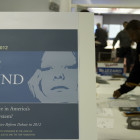
During a national press call on Thursday, U.S. Secretary of Education Arne Duncan announced an outline for the reauthorization of the Carl D. Perkins Career and Technical Education Act of 2006; a proposal entitled Investing in America’s Future: A Blueprint for Transforming Career and Technical Education. Joining Duncan for the teleconference was Brenda Dann-Messier, the Department’s assistant secretary for the Office of Vocational and Adult Education and Stanley Litow, vice president of corporate citizenship and corporate affairs and president of the IBM International Foundation. The Investing in America’s Future proposal zeroes in on a number of educational reform issues, primarily as it pertains to two-year colleges and technical education programs. According to Dann-Messier, the proposal aims to increase the nation’s skilled labor force – primarily in the fields of computer science and healthcare – through a series of career and technical education (CTE) program reforms.
Dann-Messier noted the Obama administration’s fiscal year 2013 budget included a number of investments in the nation’s community colleges and technical schools, including $1 billion proposed for carrying out the four “key areas” of the newly unveiled blueprint, which seek to increase the nation’s number of community and technical college graduates through “alignment, collaboration, accountability and innovation.”
According to an official Department of Education press release, the proposal would also incentivize “secondary schools, institutions of higher education, employers and industry partners to work together to ensure that all CTE program offer students high-quality learning opportunities.”
During the press call, Litow said the needs of private industry may necessitate a complete overhaul of the American education system. A proponent of Pathways in Technology Early College High schools (P-TECH), Litow said he would like to see more institutions adopt the educational model, which merges high school with a post-secondary technical track into a six-year program. Litow said that the key to “rebuilding” the nation’s economy was not through job creation, but through increasing the percentages of Americans with technical or career educations.











